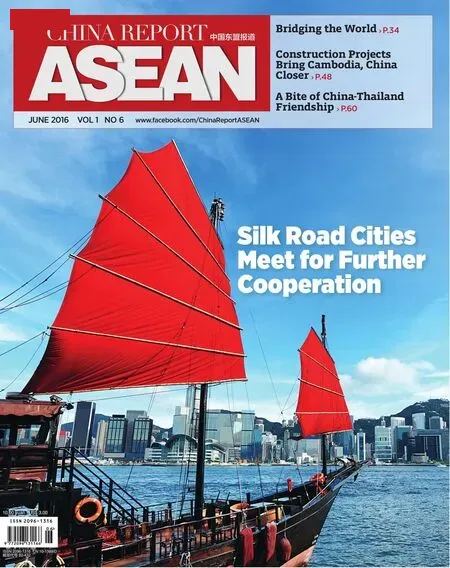How Washington Should Respond to the ‘Belt and Road'
By Zhao Minghao
How Washington Should Respond to the ‘Belt and Road'
By Zhao Minghao
Major American think tanks are beginning to take China's Belt and Road Initiative seriously. Recently, the Center for Strategic and International Studies (CSIS), based in Washington D.C., cosponsored a report on the “Belt and Road” alongside the Chongyang Institute for Financial Studies at China's Renmin University. In addition, the CSIS has launched its own “Reconnecting Asia Research Initiative”. Scholars at the Brookings Institution, Center for American Progress and National Bureau of Asian Research in the United States have also begun similar research projects.
Overreaction from the American government to Chinese proposals in recent years has created obstacles to establishing positive relations between the two countries. There are several ways in which Washington can improve its approach.
The American government made considerable efforts to dissuade European allies from joining the Asian Infrastructure Investment Bank(AIIB), which is headquartered in Beijing and was established by China, on the grounds that the institution cannot meet the “highest global standards” in management and lending. Yet Britain,Germany and France chose to become AIIB founding members despite US opposition.
In a March 2015 column titled “A Rebuff of China's AIIB Is Folly”, Financial Times commentator Martin Wolf, who has worked with the World Bank, said what America is truly worried about is that China-initiated mechanisms may undermine American influence on the global economy, and Britain's decision to join the AIIB proved a significant blow to the US. Wolf took a straightforward approach in pointing out that the rise of the Chinese economy is both desirable and unavoidable, leading to a need for fresh mechanisms. Such progress will not stop simply because the US refuses to participate.
On April 13, AIIB President Jin Liqun and World Bank President Jim Yong Kim signed their institutions' first framework agreement on joint fundraising. The agreement will allow the two parties to jointly fund development programs, meaning that the two international institutions have taken an important step forward in meeting the world's tremendous demand for fresh infrastructure. Before that, the AIIB had worked with the US-and-Japan-dominated Asian Development Bank, European Bank for Reconstruction and Development and the British Department for International Development on fundraising for development projects. The AIIB is expected to approve about US$1.2 billion in fundraising programs, including support for road construction in Pakistan and Central Asia.
For Beijing, the AIIB is a test rather than a“triumph” against the US. This is the first time the Chinese have attempted to provide public goods in the field of international development,indicating Beijing is actively embracing multilateralism in global governance. Chinese leaders have sufficient motivation to support the AIIB's“lean, clean, green” development. The AIIB is expected to demonstrate higher efficiency, zero tolerance to corruption and a strong commitment to sustainable development—including a goal that by the time the AIIB's registered capital matches that of the World Bank, the AIIB's staff will total only one-third of the latter.
Fundraising needs for infrastructure investments will reach US$10 trillion in the next decade. There will be no competition between the AIIB and other multilateral development institutions,such as the World Bank and Asian Development Bank. Instead, there is broad room for them to cooperate. Jin has stated on multiple occasions that American companies would not be excluded from the AIIB's scope of business. American lawyer Natalie Lichtenstein, who worked for the World Bank for nearly 30 years, has been hired by the AIIB as an adviser. The AIIB has its eyes on the qualifications and capabilities of potential talent, not which passport he or she holds.
Beijing has also been open to Washington regarding the Belt and Road Initiative. During his visit to the US in September 2015, Chinese President Xi Jinping stated in explicit terms that the US is welcome to participate in the initiative.
In order to promote Afghan economic development and economic integration in Central and South Asia, the US put forward its New Silk Road program in 2011. By 2014, the program had been further focused on four main fields, namely developing regional energy markets, promoting trade and transportation,upgrading customs and border control, and enhancing business and personnel exchanges.These goals are very similar to those of China's Silk Road Economic Belt program, so it is possible to link the two projects.
In fact, China and the US have already been collaborating on Afghan affairs for the past few years. Now is the appropriate time to take a bolder step forward. They can jointly support construction of infrastructure facilities such as an improved power grid, upgraded border facilities and negotiations on border trade agreements. China and the US can also cooperate under frameworks like the Central Asia Regional Economic Cooperation Program. In June 2015, Richard Hoagland, a senior official with the US Department of State,talked with officials from China's National Development and Reform Commission on how to make the New Silk Road and Silk Road Economic Belt programs mutually beneficial.
Beijing does not expect the Obama administration to enthusiastically support the Belt and Road Initiative, but it does hope that the American side can be serious about the tremendous potential for the two countries to formulate a global development partnership. In addition,the US should resist the urge to overreact to Chinese proposals. Harry Harding, a veteran China expert, explained that a “more successful and confident United States would regard the rise of China with greater equanimity”.
In the realm of international development,Washington doesn't need to panic. Instead, it should be confident and take on a different approach—allow China to fulfill its potential.

About the author:
Zhao Minghao is an Associate Research Fellow at the China Center for Contemporary World Studies.

